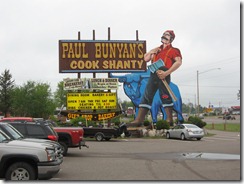Emmy winning writer/director/producer/major league baseball announcer Ken Levine has an interesting blog in which he writes about, among other things, the script-writing process. He also does reviews of television shows (which are interesting because sometimes he’ll talk about how HE would have solved a specific writing problem) and movies. Recently Ken Levine reviewed The Social Network. The story of the creation of Facebook, written by Aaron Sorkin, Levine loved the screenplay and said:
SOCIAL NETWORK was absolutely brilliant! And the star was the screenplay. Sorkin somehow managed to take a complicated completely non-visual subject, mix it with dense legal issues, present characters who are all basically unlikable, and somehow create a spellbinding movie. The screenplay is adapted from Ben Mezrich’s novel THE ACCIDENTAL BILLIONAIRES. Good luck to the guy who has to follow this and write the formation of Twitter movie.
At the time I read this blog post I had not yet seen the film so it never occurred to me to read the comments. Apparently, a commenter named Tarasha commented that she didn’t like the portrayal of women in the film and thinks Aaron Sorkin failed the women in his script and she was surprised because Sorkin created such great women characters in his other works, especially The West Wing. To the surprise of everyone, including Ken Levine, Aaron Sorkin showed up in the comments to respond to the criticism. You can click through to read his whole response but here’s part of it:
More generally, I was writing about a very angry and deeply misogynistic group of people. These aren't the cuddly nerds we made movies about in the 80's. They're very angry that the cheerleader still wants to go out with the quarterback instead of the men (boys) who are running the universe right now. The women they surround themselves with aren't women who challenge them (and frankly, no woman who could challenge them would be interested in being anywhere near them.)
And this very disturbing attitude toward women isn't just confined to the guys who can't get dates.
He then explains more and finishes with this:
I wish I could go door to door and make this explanation/apology to any woman offended by the things you've pointed out but obviously that's unrealistic so I thought the least I could do was speak directly to you.
I had the opportunity to see The Social Network last night. Truthfully, I wasn’t as blown away by the screenplay as Ken Levine was, I thought it dragged in places. But I did find it amazing that Sorkin could make the act of writing computer code not boring. But I buy Sorkin’s explanation of what he was trying to do and why he wrote the women’s characters the way he did. Maybe that is because I feel that I know Aaron Sorkin’s work and I’ve seen him create many strong women characters but I really think that the point he was trying to make was very clear.
I’m not going to judge whether this is an accurate depiction of the people portrayed in the film (no, not even Larry Summers), I would judge it only as a work of fiction. The picture Sorkin paints is not pretty. Yes, all the characters do treat women as sex objects/stupid groupies. And as he points out in his comment, no one holds a gun to these women’s heads and forces them to act the way they do or put up with the way they are treated. Clearly not all women would put up with this, a point that Sorkin makes very clear in the opening scene. He does have the lawyer of Eduardo (Zuckerberg’s former best friend) be a women and her character is strong but undeveloped. There is also a young woman lawyer on Zuckerberg’s legal team but I found it annoying that he had her say to him at the end “You’re not an asshole, Mark. You’re just trying so hard to be.” I have news for her - whether a person is an asshole at his core is irrelevant in situations in which he is ACTING like an asshole. (But then Sorkin also had this character announce at one point that she was only a second year associate sitting in and observing, only to change that story at the end when she announces that she’s an “expert” at voir dire. uh huh. After two years. Hard to take that character seriously at that point. )
All of this made me think of a novel I read last month: Skippy Dies by Paul Murray. I wasn’t going to blog about it because I didn’t really like it, but I have been thinking about it off and on since I finished it. It is the story of a group of prep school boys in Dublin and their teachers. Just as some women find the portrayal of the women inThe Social Network disturbing, the portrayal of women in this novel is disturbing. Although perhaps not as blatant as in The Social Network, all the women characters in Skippy Dies are stereotypes and they are all seen through the eyes of the boys/men.
The males in the story all react to the females as if the females were aliens from another planet. And while I understand that many boys going through puberty fear girls (and the possible rejection from them) while at the same time being drawn to them by their hormones, and while I understand that this feeling may not go away completely for grown men, it is really hard to read a novel in which all girls/women are seen through the eyes of boys and boylike men. Even when the girls are occasionally given the point of view, they don’t seem very real. And I asked myself as I was reading this – is this novel sexist? And I kept stopping myself from answering “yes” because I always wondered if (or maybe hoped that) the author was trying to make a point that treating the female sex like this is silly. The ending is somewhat ambiguous on this front. If the author was good intentioned, then he failed to make his point. If he wasn’t trying to make that point, the novel was sexist.
As I read that novel I kept thinking how interesting it was that many women were upset by Christos Tsolkias’ The Slap and thought it was misogynistic but there didn’t seem to be the same reaction to Skippy Dies. I seldom call any work misogynistic, I think that term is thrown around too often and overuse makes a term lose meaning. But I have no problem talking about sexism and sexist portrayals. I didn’t think The Slap was sexist but I did, without a doubt, think there were sexist (even, in the case of one character, misogynistic) characters in that novel. It never occurred to me to think the author was necessarily sexist or that the novel was intended to be sexist. Why? Because there were many complicated female characters in the novel many of whom were justifiably appalled at the various levels of sexism exhibited by some of the male characters. As a novelist, Tsolkias’ took care that his female characters were not stereotypes although all of the characters in the novel were types.
And yet there was heated debate over The Slap and not for Skippy Dies which contains no female characters that seem more than caricatures. Why? Maybe the point of Skippy Dies was more apparent to other readers than to me. Or maybe it is a problem with the readers. I often encounter other readers who judge novels by whether they “like” the characters or not. . I won’t tell other people how to read books, but in my opinion, just because characters in a novel are sexist doesn’t make the novel a sexist novel. It makes it a novel with difficult characters. And just because the characters in a novel are basically good and childlike doesn’t mean that the novel isn’t sexist.
I had almost put the question of Skippy Dies behind me when I went to see The Social Network. And as I watched the characterization of women in this film I found myself asking the same question. Why is Sorkin creating a universe where all college aged women are perceived as sex objects and most act like stupid groupies? Is he trying to make a point? And, if so, what point is he trying to make? And is his point about the women or is it about the men? Unlike Skippy Dies, I found his point pretty easy to follow.
Unlike the woman lawyer at the end though, I did think that Mark Zuckerberg (the character) was an absolute jerk.





